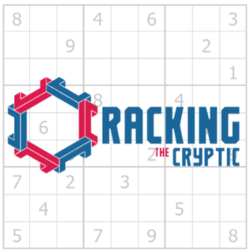Cracking The Cryptic | |
|---|---|
 Current channel logo | |
| Nationality | British |
| YouTube information | |
| Channel | |
| Years active | 2017–present |
| Genre | Puzzle |
| Subscribers | 671 thousand |
| Views | 276 million |
| Last updated: 5 November 2025 | |
| Website | crackingthecryptic |
Cracking the Cryptic (CTC) is a YouTube channel dedicated to paper-and-pencil puzzles: primarily sudoku, but also cryptic crosswords and other types of number-placement, pencil, and word puzzles. They occasionally stream puzzle videogames on YouTube.
Contents
The channel was set up in 2017 by two friends from England: Simon Anthony, a former investment banker, and Mark Goodliffe, a financial director. [1] [2] Anthony is a former member of the UK's world sudoku and world puzzle championship teams, while Goodliffe is a 14-time winner of the Times Crossword Championships and UK sudoku champion. [1] [2]
Each video is generally composed of one of the two hosts presenting a puzzle with given rules and then solving it in real time, with their live commentary. The channel features both standard and variant puzzles. [3]
During the COVID-19 pandemic, the channel grew in popularity, and as of 23 June 2025 [update] it had 650,000 subscribers, with the most popular video receiving nearly 10 million views. [4] [5] [6]
The music played at the beginning and end of many videos is Mozart's Piano Sonata No. 16, nicknamed Sonata facile or Sonata semplice. [7] Occasionally, Simon will play his guitar as part of the introduction to the video, in place of Sonata No.16. [8]